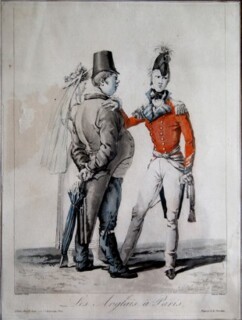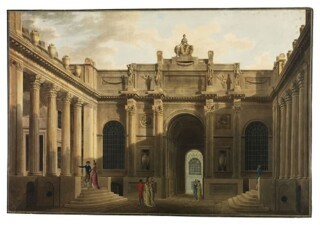At the Soane Museum
Gillian Darley
Peace Breaks Out! at Sir John Soane’s Museum focuses on the celebratory mood in London and Paris in the summer of 1814, following Napoleon’s abdication. Around Britain, Peace Fêtes were organised in cities, towns and villages. Everyone was celebrating, and some were travelling. Parisians watched the British return in droves, after a 12 year absence, caricaturing them as portly gluttons or drab country cousins. Soane was one of the first to rush over to Paris, where he had last been as a student in the late 1770s. (His wife, Eliza, meanwhile went to Dieppe.) He returned with illustrations of a new generation of Parisian buildings to use in his lectures. He was also avidly collecting ephemera and artefacts of the moment, and his possessions, amplified by the collection of one of the exhibition's curators, Alexander Rich, make up a remarkable cabinet of curiosities, a window onto those euphoric summer weeks.
London blazed with light every evening, with transparencies at the windows of the major institutions (including the Bank of England), public buildings, shops and houses. There were fireworks in the public gardens, most notably the Grand Jubilee in Honour of Peace which took place, after several delays, on 1 August. A Castle of Discord in Green Park was ‘bombarded’ for two hours until it collapsed to reveal a Temple of Concord within. A triumphant, allegorical theatrical display followed, as the temple revolved in front of the immense crowds.
When the Emperor Alexander visited the Bank of England during the Allied Sovereigns’ visit to London, the party entered through Lothbury Court, designed for the passage and handling of bullion during the Napoleonic Wars. It could not have been a better advertisement for Soane's skills. The Russian monarch complimented him (‘the able architect’) on his extensive work and ‘shook him most cordially by the hand'. It was more recognition than he ever received from the Prince Regent. Later that month, Soane presented the emperor with a set of his drawings, including some of the Bank.
Soane was a diehard admirer of Napoleon, as proof of the heights that a modestly born man might scale (if overlooking the depths to which he might also fall). On the news of his death on St Helena in 1821, Soane wrote: ‘Buonaparte has died... When shall we look on his like again!’

